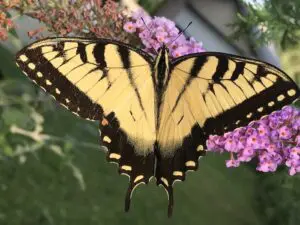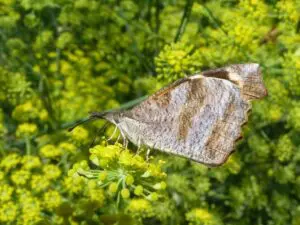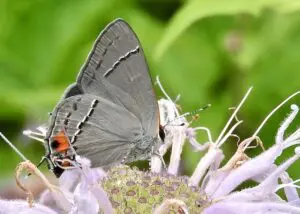Westchester-Putnam chapter holds first meeting
Charlie Roberto says he lost track of his age after he turned 60; he’s counting again, but now it’s butterflies.

Roberto, who grew up in Mahopac and lives in Croton-on-Hudson, is a true conservationist. He advises the Putnam Highlands Audubon Society and has participated in its annual Christmas bird count since the 1980s. He also advises the Saw Mill River chapter of the National Audubon Society, Fahnestock State Park and Croton Point Park, and serves on the board of Teatown Lake Reservation in Ossining.
He is now the driving force behind a new Westchester-Putnam chapter of the North American Butterfly Association (NABA). He had tried to start the chapter in 2020 but was sidetracked by the pandemic.
Butterflies are important, he says, because their health “relates directly to the health of our overall environment. They’re like the canary in the coal mine.”
Along with birds, honeybees, bats and other animals, butterflies help pollinate everything from apples and strawberries to peaches and coffee. According to the U.S. Department of Agriculture, 75 percent of flowering plants and about 35 percent of global food crops rely on animals to pollinate them.
But butterfly populations are declining worldwide as a result of habitat loss, especially due to changes in land use, along with the use of pesticides and insecticides, and climate change, including increases in severe weather.

Invasive plant species are also contributing to the decline. “Japanese stiltgrass, for example, has been here since the 1980s and entered Fahnestock within the last 10 years,” Roberto says. “It crowds out and eliminates many plants that host butterflies.”
At the same time, milkweed, which monarch butterflies rely upon as a host plant, is declining, putting further stress on that species.
Signs of Trouble
Studies indicate that populations of 17 butterfly species declined by almost 50 percent across the European Union between 1990 and 2011.
In 2021, Science reported that, over the four previous decades, the populations of more than 450 species of butterflies in the western U.S. declined by an average of 2 percent per year.
The World Wildlife Fund estimates that the number of eastern monarch butterflies that migrated south to winter in Mexico in 2023-24 decreased by 59 percent from the previous year.
In an article in American Butterflies, NABA President Jeffrey Glassberg recalled the annual butterfly counts that began in Westchester County in 1984. “There were butterflies everywhere; it was thrilling,” he wrote. “Some years, the absolute numbers were amazing.”
But the species began to disappear from northern Westchester County by the 1970s, and at least six species were extirpated by 2013. The more than 8,000 butterflies tallied in a one-day count in 1989 decreased by half.

In counts near the Teatown Lake Reservation, spotters have documented as many as 60 types of butterflies, including giant swallowtail, monarch, tiger swallowtail and great spangled fritillary. The diversity has held steady, Roberto says, but the total number of butterflies has been dropping, even as the number of people counting them has increased.
Roberto notes an unusual behavior called “hill-topping” that butterflies adopt as their numbers fall. “They fly up to the highest point of land and circle, waiting for the opposite sex,” he said.
The Westchester-Putnam chapter plans to conduct its first count in July, Roberto said, adding that counts have been moved earlier in the month to account for species whose movements have shifted due to climate change.
The chapter’s inaugural meeting on March 21 drew 22 participants. The group plans to meet about eight times yearly, with summer field trips to local habitats such as Pound Ridge in Westchester and Shenandoah Mountain along the Appalachian Trail in East Fishkill.

Over the past four years, the Philipstown Garden Club, in partnership with 11 other environmental organizations, has been teaching people how to build pollinator gardens. An initial workshop drew 100 people; the 75 participants who pledged to garden for pollinators collectively control about 1,700 acres of land.
The club also made Philipstown part of the Pollinator Pathway, which since 2017 has grown to 85 communities in New York and Connecticut. In Cold Spring, the Recreation Commission plans to create a butterfly garden in McConville (Tots) Park.
Founded in 1992, NABA is based in Mission, Texas, with 25 chapters in 15 states. Its science-based initiatives include operating the National Butterfly Center, acquiring existing habitat areas and creating new habitat. It has certified more than 10,000 butterfly gardens and organized more than 11,000 butterfly counts.
To join NABA, visit naba.org/membership. For information about the Westchester-Putnam chapter, including its next meeting on April 18 at Teatown Lake Reservation, email Roberto at [email protected].

